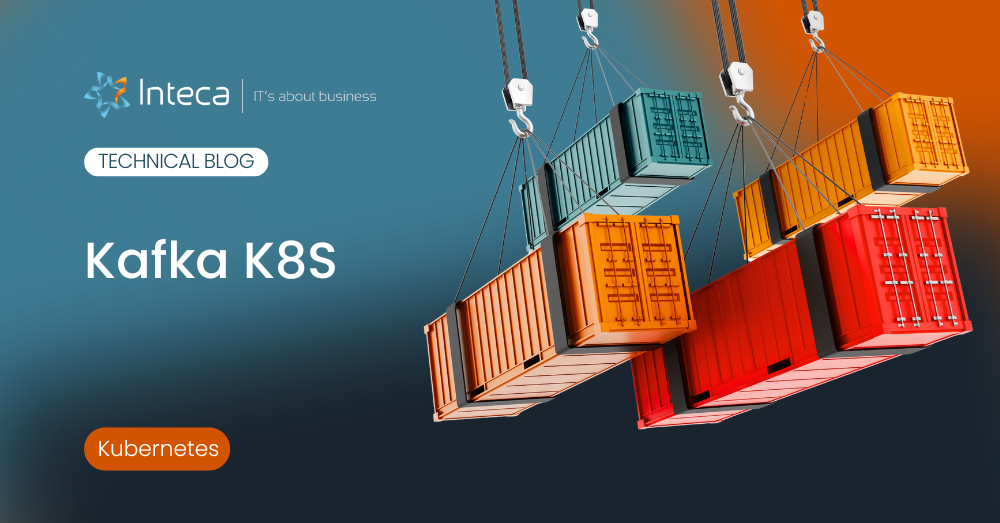In today’s fast-paced digital landscape, inefficient and poorly performing applications can significantly impact user satisfaction, cause lost revenue, and harm your organization’s reputation. Addressing these issues is vital to maintaining a competitive edge and ensuring long-term success. In this blog post, we’ll discuss common symptoms and causes of application inefficiencies, and explore strategies to optimize your applications using cloud-native tools and technologies supported by AppMomentum.
Introduction: Identifying the Symptoms of Inefficient Applications
Application inefficiencies often manifest in various ways, such as slow response times, high resource consumption, and frequent crashes. These issues can result in poor user experiences and increased operational costs. Identifying and addressing the root causes of these symptoms can help you optimize your applications, improve user satisfaction, and reduce costs.
The Common Causes of Application Inefficiencies
Several factors can contribute to application inefficiencies and performance issues. Some of the most common causes include:
- Poor architecture: Rigid, monolithic architectures can make it difficult to scale applications and manage resources efficiently.
- Lack of scalability: Applications that aren’t designed to scale horizontally can struggle to handle increased workloads, resulting in performance issues and reduced availability.
- Inadequate monitoring and observability: Insufficient insight into application performance can make it challenging to identify and address bottlenecks and inefficiencies.
Strategies for Improving Application Efficiency and Performance
There are several strategies you can employ to optimize your applications and resolve performance issues. By leveraging cloud-native tools and technologies, you can address inefficiencies and deliver better-performing applications.
Embracing Microservices and Containerization
Adopting a microservices architecture can help you break down monolithic applications into smaller, more manageable components. This approach allows for better scalability, as individual services can be scaled independently to meet demand. Containerization, often implemented using technologies like Docker, enables you to package and deploy applications with their dependencies in isolated environments, ensuring consistent performance across different stages of development and deployment.
AppMomentum supports microservices and containerization by providing a platform built on open standards like Kubernetes, which simplifies the deployment and management of containerized applications. By leveraging AppMomentum, you can improve application scalability and resource management, resulting in more efficient and performant applications.
Leveraging Cloud-Native Tools and Services
Cloud-native tools and services can help you optimize your applications and improve their performance. By using technologies like Kubernetes, Istio, and Knative, you can achieve better resource management, enhanced security, and simplified application deployment.
AppMomentum, powered by open-source technologies, enables you to run your applications on-premises or in the cloud, providing the flexibility needed to modernize at your own pace. Its support for Kubernetes, Istio, and other cloud-native tools allows you to leverage the latest advancements in application development and management to improve efficiency and performance.
Implementing Effective Monitoring and Observability
Comprehensive monitoring and observability are essential to identifying and resolving performance bottlenecks and inefficiencies in your applications. By using monitoring tools like Prometheus and Grafana, you can gain insights into application performance and identify areas for improvement. AppMomentum provides out-of-the-box telemetry for service management, making it easy to set and view service-level objectives and manage application performance.
Adopting DevOps and CI/CD Practices
DevOps practices and continuous integration/continuous delivery (CI/CD) pipelines can streamline development processes and help developers quickly address performance issues. By automating tasks like building, testing, and deploying applications, you can minimize human error, reduce deployment risks, and accelerate the release of new features and improvements.
AppMomentum supports DevOps and CI/CD through integrations with tools like GitLab CI/CD and Tekton, enabling your development and operations teams to collaborate more effectively and deploy applications faster.
Increase Productivity with Modern Frameworks like Quarkus, Angular, Kafka, and Flutter
Adopting modern application development frameworks can help you build more efficient, scalable, and performant applications. Technologies like Quarkus, Angular, Kafka, and Flutter can significantly enhance your development process and help you create applications that meet the demands of today’s users.
Quarkus is a Kubernetes-native Java framework designed for building fast, lightweight, and efficient applications. By utilizing this framework, you can reduce your application’s resource consumption, start-up time, and overall footprint.
Angular is a popular web application development framework that enables you to build highly performant, scalable, and maintainable applications. With its support for reactive programming and a rich ecosystem of libraries and tools, Angular can help you improve the efficiency of your web applications.
Kafka is a distributed streaming platform that enables you to build real-time, event-driven applications. By leveraging Kafka, you can ensure efficient data processing and communication between your application components, improving overall performance.
Flutter is a UI toolkit for building natively compiled applications for mobile, web, and desktop from a single codebase. With its focus on high-performance rendering and a rich set of pre-built widgets, Flutter allows you to create fast, responsive, and visually appealing applications.
AppMomentum supports these modern frameworks, allowing you to benefit from their efficiency and performance improvements in your application development process.
Conclusion: Optimizing Your Applications for Better Performance and Efficiency
Addressing application inefficiencies and performance issues is crucial for delivering satisfying user experiences and maintaining a competitive edge in today’s digital landscape. By embracing cloud-native technologies, adopting modern application development frameworks, and implementing effective monitoring and observability, you can optimize your applications and ensure their continued success.
Key Takeaways:
- Identify and address the root causes of application inefficiencies and performance issues.
- Embrace microservices, containerization, and cloud-native tools to optimize application scalability and resource management.
- Implement effective monitoring and observability practices to gain insights into application performance.
- Adopt modern application development frameworks like Quarkus, Angular, Kafka, and Flutter to build more efficient, scalable, and performant applications.
- Leverage AppMomentum’s support for open standards, cloud-native tools, and modern frameworks to improve your application development process and address performance issues.
By following the strategies outlined in this blog post and leveraging the capabilities provided by AppMomentum, you can overcome the challenges of application inefficiencies and performance issues, ultimately delivering better user experiences and driving long-term success for your organization.




